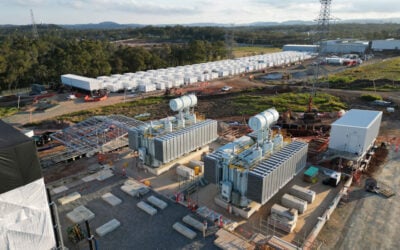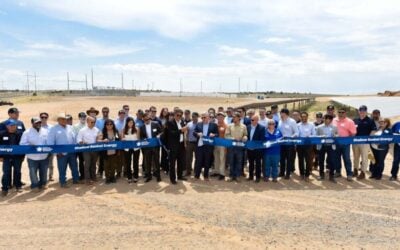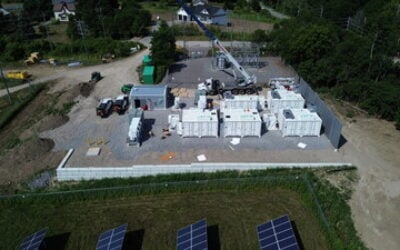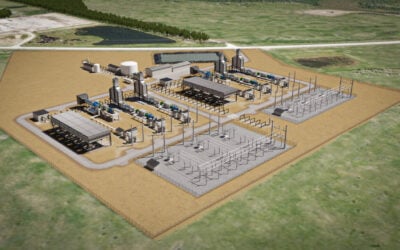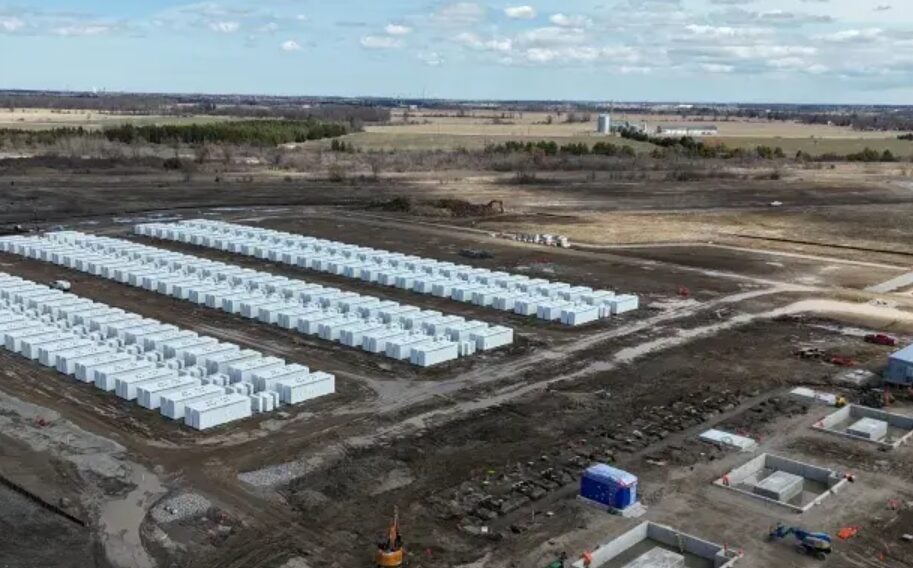
Quebec-based IPP Boralex has received the green light from local authorities to move forward with a 125MWh/500MWh BESS located in Oxford County, Ontario.
Approval occurred during a regular Oxford City Council meeting held on October 8, representing an important step in moving towards commencing construction.
The project in question, known as Oxford BESS, happens to be one of the three Boralex developments destined for Ontario that holds a contract originating from the Independent Electricity System Operator (IESO) Long-Term 1 (LT1) RFP.
From gravel pit to BESS
The Oxford BESS project will occupy 11.2 acres of an existing gravel pit located within the Township of South-West Oxford, made up of around 120 individual battery units, with space for another 29 augmented ones.
Try Premium for just $1
- Full premium access for the first month at only $1
- Converts to an annual rate after 30 days unless cancelled
- Cancel anytime during the trial period
Premium Benefits
- Expert industry analysis and interviews
- Digital access to PV Tech Power journal
- Exclusive event discounts
Or get the full Premium subscription right away
Or continue reading this article for free
Although gravel extraction is expected to continue, the Boralex project is located on the floor of a portion of the pit where the aggregate operation has already been completed, offering unique benefits for the developer and surrounding community.
“There is mitigation already built in naturally to this site … about 100ft east of the site we have a berm between the project and nearby residences which acts as a sound barrier”, explained Boralex Senior Development Manager, Asier Ania, during the recent city council meeting.
The project will interconnect to the IESO electricity grid via a Hydro One-owned 115kV transmission line running parallel to the northeastern portion of the site.
Boralex is completing development of this lithium iron phosphate (LFP)-based BESS in partnership with the Six Nations of the Grand River Development Cooperation.
Fire mitigation measures
After the project was introduced, the recent council meeting turned to the discussion of BESS fires and potential mitigation measures.
To begin with, Boralex completed a community risk assessment (CRA) in tandem with the municipality and local fire departments, which was then independently peer-reviewed and approved by Oxford County officials.
Boralex is also in the process of completing an emergency response plan in collaboration with fire safety experts ESRG and several local fire departments.
Additionally, as pointed out by Ania, fire mitigation starts with picking the right battery equipment and carefully considering the “alphabet soup” of acronyms for multiple industry standards specifically for the deployment of battery storage.
This includes the National Fire Code of Canada, alongside internationally recognized standards from the National Fire Protection Association (NFPA) and Underwriters Laboratories (UL) – with Boralex stating that its Oxford project will adhere to all.
During a recent open house discussion, Boralex revealed that they plan to deploy the latest battery storage technology produced by Canadian Solar subsidiary E-Storage.
Launched earlier this year, the company claims its SolBank 3.0 battery storage unit offers a “near zero battery degradation curve” for the first four years of operation.
Before a vote on the project took place, several council members commended the work completed by Boralex and its partners, particularly when it comes to alleviating concerns surrounding BESS fires.
“I can safely say that you and your team have gone through and answered every question [and] … made sure we were satisfied with those answers,” said Councillor Jerry Acchione, summing up the mood in the room.
“We won’t fear this site because of all the safety [measures] you’ve put in place,” added Acchione.
Next steps
During the meeting, officials approved official plan and zoning by-law amendments submitted by Boralex, allowing for the establishment of the BESS facility.
Although a step in the right direction, “this doesn’t allow everything to move forward – there’s lots of steps like the site plan approval [process] … in order for us to begin construction,” said Ania.
Before approving the amendments, Councillor David Mayberry said that the “real issue now is the details and the satisfaction of the fire department on the site plan,” which he said was going to be a “long and slow process.”
“In my mind that’s the next and possibly most important step to nail down every detail,” added Mayberry.
Commercial operations for the Oxford project are slated for the final quarter of 2026 at the earliest.
IESO LT2 RFP
Boralex was one of the most successful developers in IESO’s inaugural LT1 RFP, securing three contracts representing a cumulative 505MW/2,020MWh of storage capacity.
Alongside Oxford, the developer secured long-term capacity contracts for its 300MW/1,200MWh Hagersville (pictured above) and 80MW/320MWh Tilbury projects as part of the expedited portion of LT1.
As reported by Energy-Storage.news, the IESO launched its latest procurement scheme in June of this year, known as the Long-Term 2 (LT2) RFP. As part of an adjusted process, the system operator is seeking to procure up to 1.6GW of storage capacity over the next four years, with 600MW being sought this year as part of the first phase.
With municipal support resolutions (MSR) being a prerequisite this time around, several developers, including Boralex, are currently engaging with local communities in the hope of garnering their support.
In partnership with Alderville First Nation, Boralex is developing a 200MW/1,600MWh long-duration energy storage (LDES) project located in the Town of Greater Napanee, which it intends to submit into the upcoming LT2 procurement window.
Dubbed Lennox BESS, Boralex first intended to bid the project into LT1 auction, however, due to grid interconnection issues, the project didn’t move forward.
This year’s LT2 submission proposal deadline for capacity providing projects is on December 18 2025, with IESO expected to hand out contracts during the second quarter of next year.

